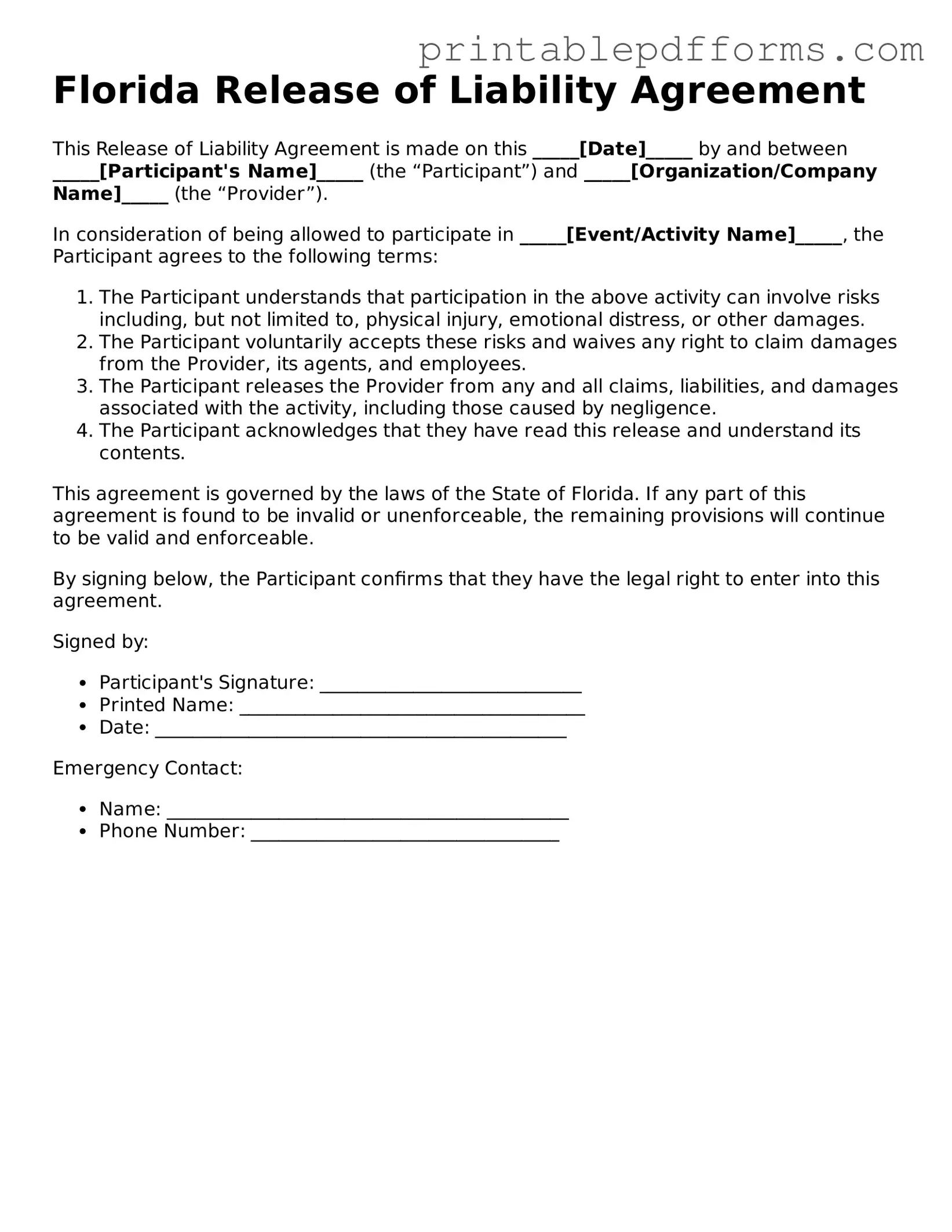Florida Release of Liability Agreement
This Release of Liability Agreement is made on this _____[Date]_____ by and between _____[Participant's Name]_____ (the “Participant”) and _____[Organization/Company Name]_____ (the “Provider”).
In consideration of being allowed to participate in _____[Event/Activity Name]_____, the Participant agrees to the following terms:
- The Participant understands that participation in the above activity can involve risks including, but not limited to, physical injury, emotional distress, or other damages.
- The Participant voluntarily accepts these risks and waives any right to claim damages from the Provider, its agents, and employees.
- The Participant releases the Provider from any and all claims, liabilities, and damages associated with the activity, including those caused by negligence.
- The Participant acknowledges that they have read this release and understand its contents.
This agreement is governed by the laws of the State of Florida. If any part of this agreement is found to be invalid or unenforceable, the remaining provisions will continue to be valid and enforceable.
By signing below, the Participant confirms that they have the legal right to enter into this agreement.
Signed by:
- Participant's Signature: ____________________________
- Printed Name: _____________________________________
- Date: ____________________________________________
Emergency Contact:
- Name: ___________________________________________
- Phone Number: _________________________________
